- Clone
- SE5A5 (See other available formats)
- Regulatory Status
- RUO
- Other Names
- SIRPa, SIRPb, SIRPalpha/beta, BIT, SHPS1, MFR, P84, PTPNS1, CD172 antigen-like family member A, CD172 antigen-like family member B
- Isotype
- Mouse IgG1, κ
- Ave. Rating
- Submit a Review
- Product Citations
- publications
CD172a, also known as signal-regulatory protein α (SIRPα), src homology 2 domain-containing phosphatase substrate-1 (SHPS1), PTPNS1, BIT, MFR, and P84, is a 75-110 kD transmembrane glycoprotein involved in receptor tyrosine kinase coupled signaling pathway. It belongs to the Ig superfamily and is primarily expressed on monocytes/macrophages, granulocytes, dendritic cells, and neurons. CD172a serves as a substrate of activated receptor tyrosine kinases (RTKs). The interaction of CD172a intracellular domain with SHP-1 and SHP-2 displays negative signaling in the regulation of leukocyte adhesion and transmigration, T cell activation, macrophage fusion, and phagocytosis. CD47 (IAP) is the extracellular ligand for CD172a. SIRPα was recently demonstrated to be a specifc marker for cardiomyocytes derived from human pluripotent stem cells2.
Product DetailsProduct Details
- Verified Reactivity
- Human
- Reported Reactivity
- African Green, Baboon, Cynomolgus, Rhesus
- Antibody Type
- Monoclonal
- Host Species
- Mouse
- Immunogen
- NIH-3T3/hu-SIRPα cell line
- Formulation
- Phosphate-buffered solution, pH 7.2, containing 0.09% sodium azide
- Preparation
- The antibody was purified by affinity chromatography and conjugated with Spark Red™ 718 under optimal conditions.
- Concentration
- 0.2 mg/mL
- Storage & Handling
- The antibody solution should be stored undiluted between 2°C and 8°C, and protected from prolonged exposure to light. Do not freeze.
- Application
-
FC
- Recommended Usage
-
Flexi-Fluors™ are provided at a standard 0.2 mg/mL concentration. We recommend titrating this reagent to determine the optimal concentration for each application. For many flow cytometry applications, conjugated antibodies perform well at concentrations ranging from 0.03 to 1.0 µg per million cells in 100 µL. We recommend testing a range of concentrations starting from 10 µg/mL.
For example, make five 1:1 serial dilutions of the 0.2 mg/mL antibody. Add 5 µL of each dilution (including the undiluted antibody) to 100 µL of cells (at 107 cells/mL) to test six concentrations -- 1.0, 0.5, 0.25, 0.125, 0.06, and 0.03 µg per million cells in 100 µL volume. Compare staining patterns or create a titration curve using the MFI or staining index to determine the optimal concentration. - Excitation Laser
-
Red Laser (633 nm)
- Application Notes
-
Clone SE5A5 recognizes a common epitope on SIRPa (90 kD) and SIRPß (50 kD)3. A high degree of homology has been found between SIRP family isoforms alpha and beta at the level of extracellular domains. Consequently, many anti SIRP antibody clones, such as SE5A5, have been reported to cross react with several SIRP isoforms1,4,5. It reacts with CD172a and has weak cross-reaction with CD172b. This antibody is able to block the binding of SIRPa (SIRPa1 and SIRPa2) to CD471,6.
- Additional Product Notes
-
For more information about Flexi-Fluors™, visit our Flexi-Fluor™ page and review FAQs associated with this product line.
-
Application References
(PubMed link indicates BioLegend citation) -
- Seiffert M, et al. 1999. Blood 94:3633.
- Dubois NC, et al. 2011. Nat. Biotechnol. 29:1011.
- Barros MM, et al. 2009. Transfusion 49:154.
- Liu Y, et al. 2005. J. Biol. Chem. 280:36132.
- Barclay AN. 2009. Curr. Opin. Immunol. 21:47.
- Florian S, et al. 2005. J. Leukoc. Biol. 77:984.
Antigen Details
- Structure
- 75-110 kD glycoprotein , signal-regulatorey-protein family, Ig superfamily
- Distribution
-
Monocytes/macrophages, granulocytes, dendritic cells, neurons, cardiomyocytes
- Function
- Negative regulation of leukocyte adhesion and transmigration, macrophage fusion, phagocytosis
- Ligand/Receptor
- CD47
- Cell Type
- Dendritic cells, Granulocytes, Macrophages, Monocytes, Neurons
- Biology Area
- Immunology
- Molecular Family
- CD Molecules
- Antigen References
-
1. Seiffert M, et al. 1999. Blood 94:3633.
2. Seiffert M, et al. 2001. Blood 97:2741.
3. Timms JF, et al. 1998. Mol. Cell Biol. 18:3838.
4. Barclay AN and Brown MH. 2006. Nat. Rev. Immnuol. 6:457. - Gene ID
- 140885 View all products for this Gene ID
- UniProt
- View information about CD172a/b on UniProt.org
Related Pages & Pathways
Pages
Related FAQs
- What are Flexi-Fluors?
-
Flexi-Fluors are rapidly made-to-order conjugated antibodies. The technology, manufacturing processes, and specifications used to create Flexi-Fluors are the same as our regular catalog products. However, the optimal concentration and performance of each Flexi-Fluor must be determined by the customer.
- How quickly will I receive my order?
-
We aim to ship Flexi-Fluors within 2-3 weeks of receipt of your order. However, depending on your location, shipping times may vary.
- How are Flexi-Fluors different from regular catalog products?
-
Flexi-Fluors are made on demand, specifically for you. Flexi-Fluors are manufactured using the same high-quality standards, and specifications as other catalog products. For faster delivery, Flexi-Fluors are not tested by flow cytometry to determine optimal concentrations or evaluate performance. This testing needs to be performed by the customer.
- How do I determine the optimal concentration for using my Flexi-Fluor? How should I titrate my antibody?
-
Flexi-Fluors are provided at a standard 0.2 mg/mL concentration. We recommend that you titrate your antibody to determine the optimal concentration to use for your application. For many flow cytometry applications, conjugated antibodies perform well at concentrations ranging from 0.03 to 1.0 µg per million cells in 100 µL volume. We recommend that you test a range of concentrations starting from 10 µg/mL.
For example, make five 1:1 serial dilutions of your 0.2 mg/mL antibody. Add 5 µL of each dilution (including the undiluted antibody) to 100 µL of cells (at 107 cells/ml) to test six concentrations - 1.0, 0.5, 0.25, 0.125, 0.06, and 0.03 µg per million cells in 100 µL volume. Compare staining patterns or create a titration curve using the MFI or staining index to determine the optimal concentration.
- I can’t find the antibody-dye combination that I need. When will it be available?
-
We continuously update our catalog, introducing scores of new products every month. Please get in touch with our Technical Service team for an update on new products or recommendations for suitable alternatives to complete your panel. Or contact Custom Solutions to inquire about our affordable custom conjugation services.
- I need help to validate the performance of my Flexi-Fluor. Who should I contact?
-
Please get in touch with Technical Service for assistance.
- Can I order more than 50 μg of a Flexi-Fluor?
-
Yes, you can order multiple vials of the same Flexi-Fluor products. We cannot guarantee, however, that these vials will be bottled from the same lot. For bulk single-lot orders, contact our Custom Solutions team.
- What is the expiration date of my Flexi-Fluor?
-
Expiration dates can be found on the vial label or by using our CoA lookup tool.
Other Formats
View All CD172a/b (SIRPα/β) Reagents Request Custom Conjugation| Description | Clone | Applications |
|---|---|---|
| Purified anti-human CD172a/b (SIRPα/β) | SE5A5 | FC |
| Biotin anti-human CD172a/b (SIRPα/β) | SE5A5 | FC |
| PE anti-human CD172a/b (SIRPα/β) | SE5A5 | FC |
| PE/Cyanine7 anti-human CD172a/b (SIRPα/β) | SE5A5 | FC |
| APC anti-human CD172a/b (SIRPα/β) | SE5A5 | FC |
| PerCP/Cyanine5.5 anti-human CD172a/b (SIRPα/β) | SE5A5 | FC |
| PE/Cyanine5 anti-human CD172a/b (SIRPα/β) | SE5A5 | FC |
| Alexa Fluor® 700 anti-human CD172a/b (SIRPα/β) | SE5A5 | FC |
| APC/Fire™ 750 anti-human CD172a/b (SIRPα/β) | SE5A5 | FC |
| FITC anti-human CD172a/b (SIRPα/β) | SE5A5 | FC |
| APC/Cyanine7 anti-human CD172a/b (SIRPα/β) Antibody | SE5A5 | FC |
| Spark Red™ 718 anti-human CD172a/b (SIRPα/β) (Flexi-Fluor™) | SE5A5 | FC |
Compare Data Across All Formats
This data display is provided for general comparisons between formats.
Your actual data may vary due to variations in samples, target cells, instruments and their settings, staining conditions, and other factors.
If you need assistance with selecting the best format contact our expert technical support team.
-
Purified anti-human CD172a/b (SIRPα/β)
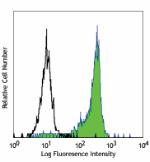
Human peripheral blood monocytes stained with purified SE5A5... -
Biotin anti-human CD172a/b (SIRPα/β)
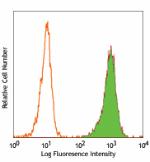
Human peripheral blood granulocytes stained with biotinylate... -
PE anti-human CD172a/b (SIRPα/β)
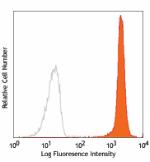
Human peripheral blood granulocytes stained with SE5A5 PE -
PE/Cyanine7 anti-human CD172a/b (SIRPα/β)

Human peripheral blood granulocytes stained with SE5A5 PE/Cy... -
APC anti-human CD172a/b (SIRPα/β)

Human peripheral blood granulocytes were stained with anti-h... -
PerCP/Cyanine5.5 anti-human CD172a/b (SIRPα/β)
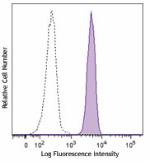
Human peripheral blood granulocytes were stained with anti-h... -
PE/Cyanine5 anti-human CD172a/b (SIRPα/β)
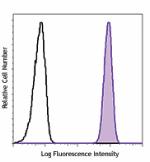
Human peripheral blood granulocytes were stained with CD172a... -
Alexa Fluor® 700 anti-human CD172a/b (SIRPα/β)

Human peripheral blood granulocytes were stained with anti-h... -
APC/Fire™ 750 anti-human CD172a/b (SIRPα/β)
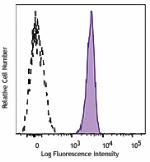
Human peripheral blood granulocytes were stained with anti-h... -
FITC anti-human CD172a/b (SIRPα/β)
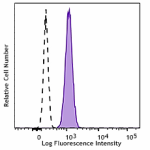
Human peripheral blood granulocytes were stained with anti-h... -
APC/Cyanine7 anti-human CD172a/b (SIRPα/β) Antibody
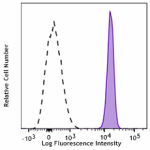
Human peripheral blood granulocytes were stained with CD172a... -
Spark Red™ 718 anti-human CD172a/b (SIRPα/β) (Flexi-Fluor™)
 Login / Register
Login / Register 













Follow Us